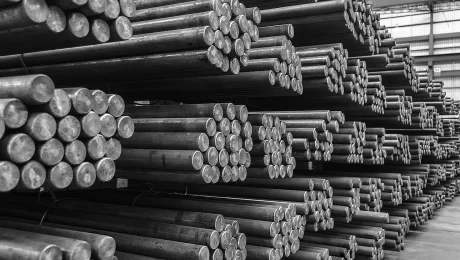Understanding Metal Fabrication: How It Shapes Our World
Imagine a world without bridges, cars, or even the simple steel tools you use daily. Have you ever wondered how these essential items are made? The secret lies in metal fabrication — a process that turns raw metal into the structures and objects we rely on. This article will guide you through what metal fabrication is, why it’s so important, and how it impacts our everyday lives. By the end, you’ll have a clear understanding of this fascinating industry and its many uses.
What Is Metal Fabrication?
Metal fabrication is the process of cutting, bending, assembling, and finishing metal materials to create useful items or structures. Think of it as a giant puzzle, where raw metal pieces are shaped and connected to build something new. From the tiny screws in your electronics to large bridges spanning rivers, everything begins with some form of metal fabrication.
This process is different from simply purchasing pre-made metal parts. Instead, fabrication is about customizing metals to fit specific needs. Structures are designed, then carefully shaped and assembled in factories or workshops. The goal is to produce durable, accurate, and efficient finished products.
Why Is Metal Fabrication Important?
Strong, reliable, and versatile — these are qualities that define metal fabrication. It helps make countless things we use every day:
- Building Infrastructure: Bridges, airports, and skyscrapers depend on metal fabrication for their frames.
- Manufacturing Equipment: Machines and tools in factories are often made with fabricated metal parts.
- Transportation: Cars, trains, and ships all involve metal fabrication during their manufacturing process.
- Home and Office Items: Furniture, appliances, and even art pieces often start as fabricated metals.
Without metal fabrication, many industries wouldn’t be able to produce the complex, durable, and smart products we depend on. It’s a vital part of modern engineering and design.
The Basic Steps in Metal Fabrication
To understand how metal fabrication works, it helps to look at the main steps involved:
1. Cutting Metal
First, raw metal is cut into manageable pieces using tools like saws, lasers, or plasma cutters. Precision is key here to ensure parts fit together perfectly later.
2. Bending and Shaping
Next, the metal pieces are bent or shaped into the desired form using press brakes or other tools. This step can create curves, angles, or unique designs.
3. Assembling Parts
Then, the different metal parts are joined together through welding, bolting, or riveting. This assembly creates larger, complex metal structures or objects.
4. Finishing Touches
Finally, the fabricated metal might undergo finishing processes like polishing, coating, or painting to improve appearance and prevent rust.
Types of Metal Fabrication
Metal fabrication includes various techniques based on what’s being made:
- Structural Fabrication: Building frameworks for buildings and bridges.
- Sheet Metal Fabrication: Creating items like enclosures, ducts, or panels.
- Custom Fabrication: Unique projects such as artistic sculptures or specialized machinery.
Each type requires specific skills and equipment, but all share the goal of transforming raw metal into functional products.
Why Choose Steel for Fabrication?
Among the many metals used in fabrication, steel is the most common. Why?
- Strength and Durability: Steel can withstand heavy loads and harsh conditions.
- Versatility: It can be shaped into almost any form.
- Cost-Effectiveness: Steel is affordable compared to other metals.
- Corrosion Resistance: When treated, steel resists rust, making it suitable for outdoor use.
Steel round bars are especially popular in construction because they are strong, reliable, and easy to work with, which makes them ideal for various fabrication projects.
Choosing a Metal Fabrication Service
If you’re curious about how metal fabrication can be used for your project, consider these factors:
- Experience and Equipment: Look for companies with a proven track record and modern tools.
- Range of Services: A good fabricator offers everything from cutting to finishing.
- Customization Capabilities: Ensure they can meet your specific design needs.
- Quality Assurance: Check if they follow safety and quality standards.
As a beginner, understanding these basics helps you appreciate how much expertise goes into creating the metal items we often take for granted.
Open Loop: What’s Next?
Now that you understand the core ideas behind metal fabrication, you might be wondering how this process evolves into the amazing, complex structures that surround us. What new innovations are shaping the future of this industry? Keep exploring, and you’ll discover how technology keeps pushing the boundaries of what’s possible with metal.
Summary
Metal fabrication might seem complicated at first, but its essence is simple: transform raw metal into useful forms. Through cutting, shaping, assembling, and finishing, skilled workers create everything from tiny screws to towering skyscrapers. Knowing this process helps us see the beautiful balance of engineering and creativity behind everyday objects.
Whether you’re dreaming of a future project or just curious about how things are made, understanding metal fabrication opens your eyes to the craftsmanship and technology that build our world.
Secondary Keywords: steel round bars, metal cutting, welding, structural steel, fabrication techniques

